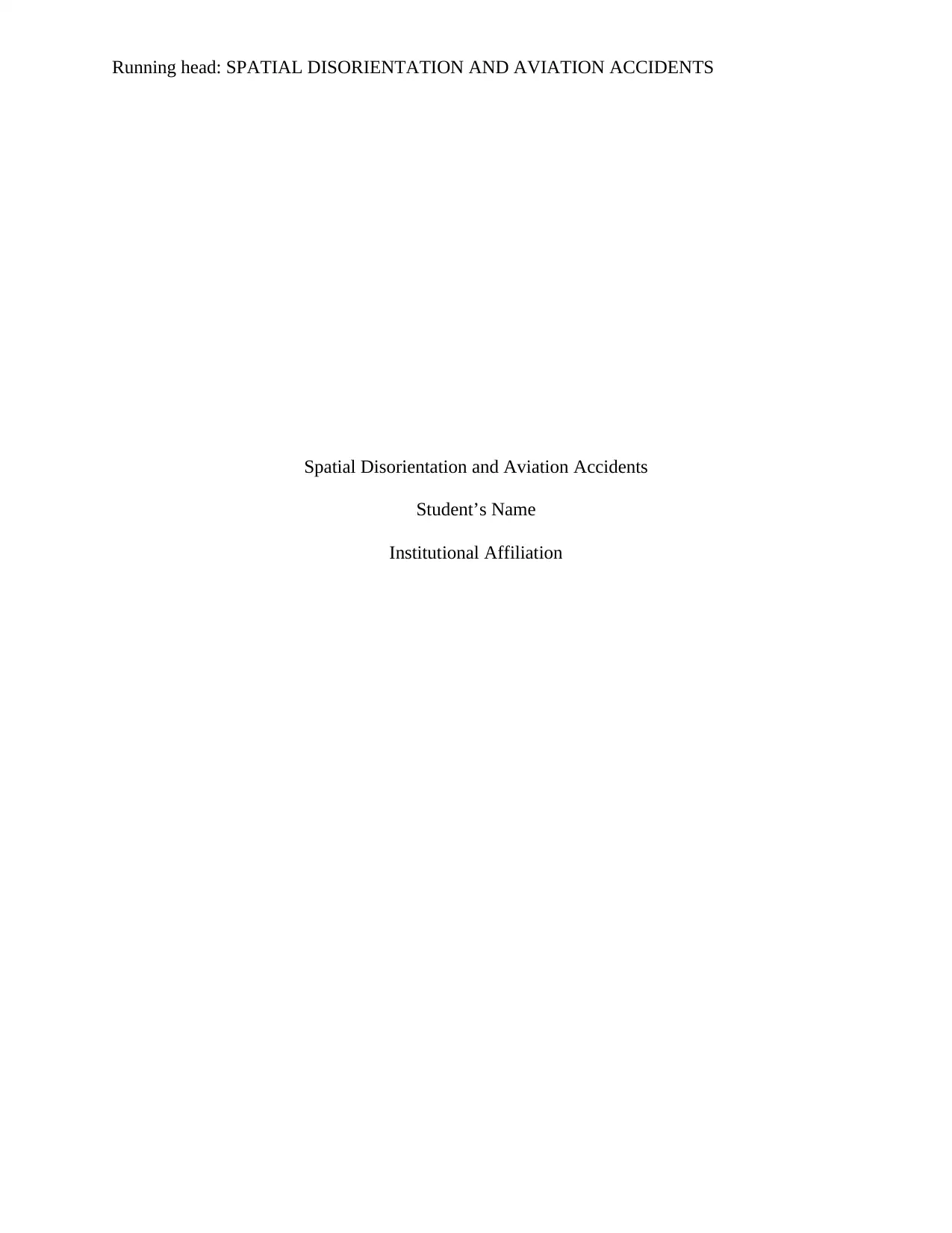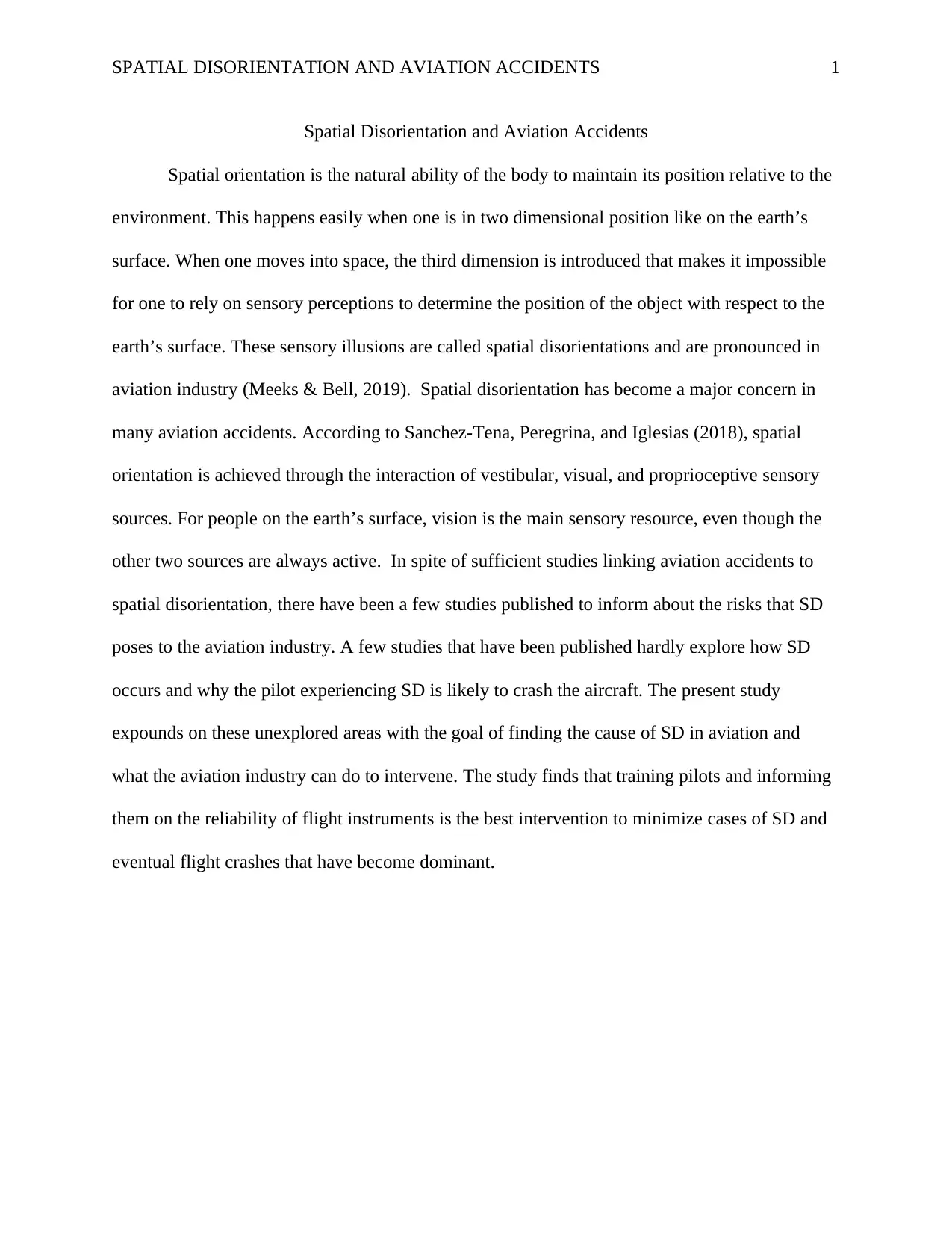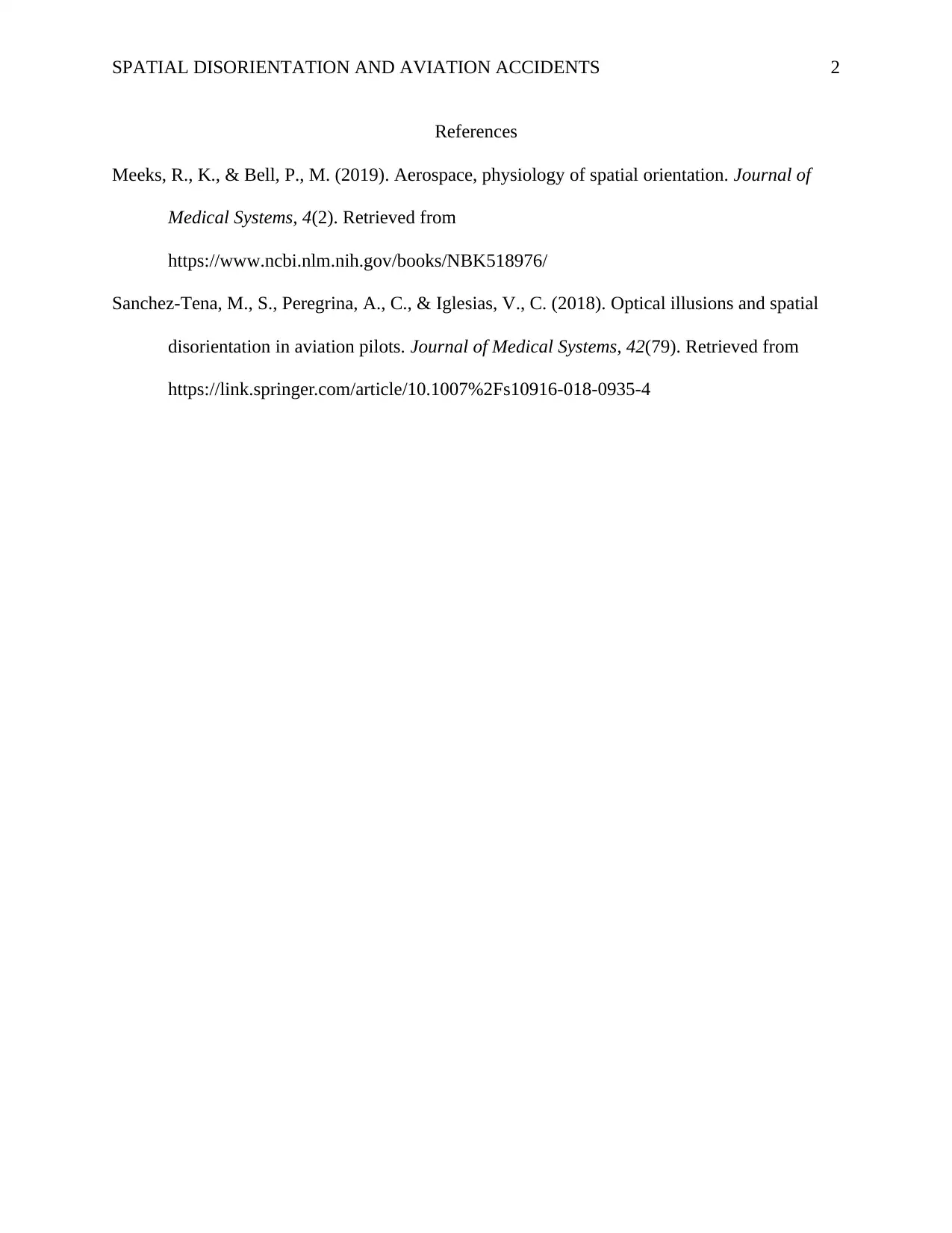Aviation: Spatial Disorientation and Accidents Report - Study Analysis
VerifiedAdded on 2023/01/23
|3
|404
|69
Report
AI Summary
This report delves into the critical issue of spatial disorientation in aviation, a significant contributor to accidents. It begins by defining spatial orientation and the role of the vestibular, visual, and proprioceptive systems in maintaining it. The report emphasizes the importance of vision for spatial orientation on the earth's surface and highlights the challenges posed by the third dimension in space. The core of the report focuses on the causes and effects of spatial disorientation, explaining how sensory illusions can mislead pilots. It then explores the existing research on the topic, including the need for further studies on the topic. The study's primary finding is that pilot training and the effective use of flight instruments are essential interventions to minimize the risks of spatial disorientation and reduce the likelihood of aviation accidents. The report references relevant studies to support its conclusions and emphasizes the practical importance of its findings for aviation safety.
1 out of 3





![[object Object]](/_next/static/media/star-bottom.7253800d.svg)